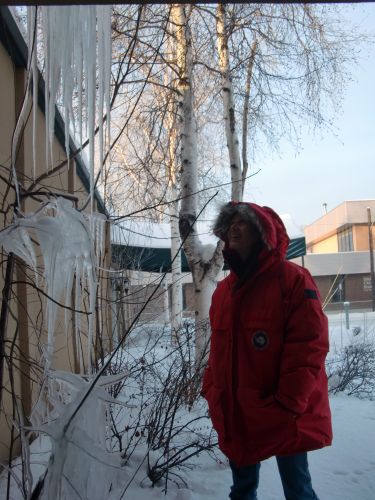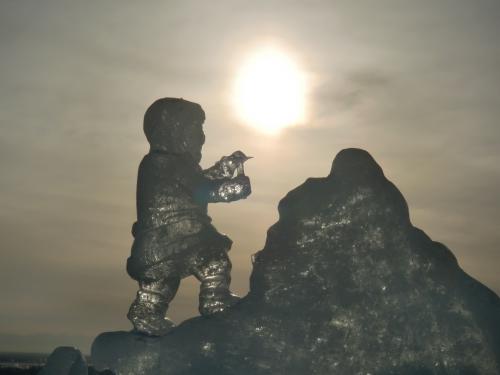Working Hard in Fairbanks
Learning to Journal and Document Science
It's Day 3 at the PolarTREC Orientation and Share Fair in Fairbanks, Alaska. What are we doing? Well, in addition to learning fascinating polar science, a large part of the training is learning to be effective science communicators. This will be our role while out on our individual science expeditions.
I have been issued a MacBook with software for writing, editing and loading journal entries to the PolarTREC website along with a camera for photo and video documentation. We are busy learning and practicing the mechanics of how to do this and making our first entries. We haven't mastered photo and video documentation yet, so for now the entries are only text with links. I even have homework! The assignment is to make another journal entry so here goes.
Now It's Your Turn!
A cool phenomenon in very cold weather (it is currently -29) is that when you throw hot water into the air it turns into tiny ice crystals before hitting the ground and looks like a little snow cloud. As fun as this is to watch, the perplexing thing is that if you try it with cold water nothing happens. The cold water just falls to the ground in the same way that it went up. I made a video of this and it is super cool! I will post the video in a subsequent journal (we have to learn how to do this first), but in the meantime, be thinking about why this happens to hot water and not cold. If you have an idea, go ahead and post it in the comments section. You can do this now or wait for the video. If you are one of my students I'll even give you a little bit of extra credit! Note to my students (hint, hint)- think about the changes of state we learned. There are two changes of state involved with this process. Good luck!
Note to my students and anyone else posting comments- For my students, enter your first name and last initial and I'll know who you are, of course, unless you are one of the Trevors (better use the first two letters of your last name then). Anyone else, you can call yourself whatever you want!
 I'm in Fairbanks checking out this very large interesting icicle.
I'm in Fairbanks checking out this very large interesting icicle.
 The Museum of the North welcomes visitors with this beautiful ice sculpture.
The Museum of the North welcomes visitors with this beautiful ice sculpture.

Comments